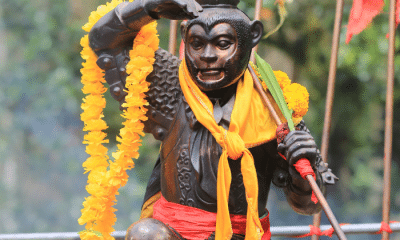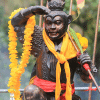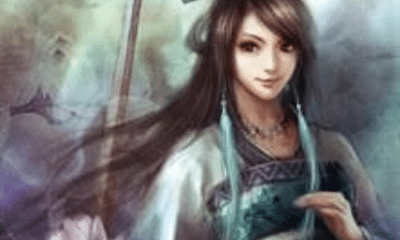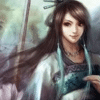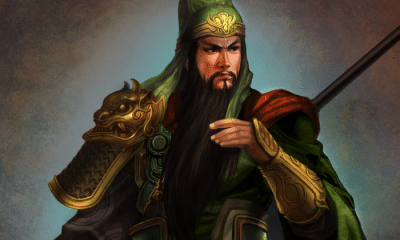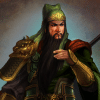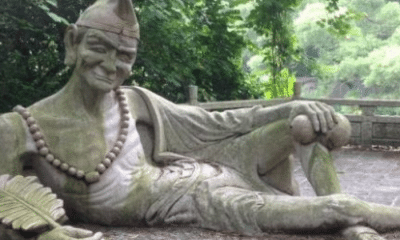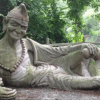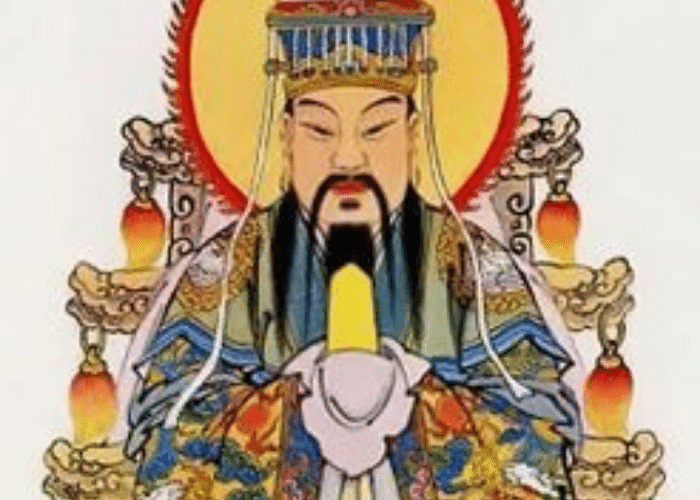
Chinese
Di Jun: The Royal Father of the Suns
Di Jun: The Royal Father of the Suns
Di Jun was an ancient emperor, most often remembered for being the father of ten suns. But is there more to the myth than his role in keeping the sun in its place?
According to one legend, Di Jun was one of the first emperors of China. He was not only a human ruler, but a divine figure as well.
As the father of the suns, Di Jun was at the center of a famous myth of ancient China. When the suns flew wildly in the form of birds it was Di Jun, their own father, who had to give the order to shoot them down.
While Di Jun’s only major appearance in Chinese literature is in this myth, some scholars believe that he is closely linked to a more well-known legendary emperor. His story has enough in common with those of the White Emperor to believe that they came from the same source.
The White Emperor’s legends are more numerous and varied, but which myth is the original?
Di Jun the Emperor
According to many legends, Di Jun was one of the first emperors of China. These ancient rulers were not just early kings, there were also divine figures who helped to create the world and society.
Like other ancient leaders, many of Di Jun’s accomplishments were in agriculture. Both he and his sons are credited with many innovations, including the growth of millet, the invention of beer, and the use of roasting to prepare meats.
Di Jun is most famous, however, for the misadventures of another group of his sons.
The divine emperor was married several times, but his first wife was Xihe. She drove the chariot of the sun across the sky.
Their ten sons were born as black birds. Each was a sun that radiated light and heat from his body.
Each morning, Xihe would choose one of her sons to ride with her across the sky. The others remained on their perches in a great mulberry tree at the eastern edge of the world.
One day, however, all ten birds decided to fly out at once. The combined heat of ten suns quickly began to scorch the earth and kill off life.
Di Jun pleaded with his sons to return to their roost, but they did not listen to him. They were young and too excited by their new freedom to pay any attention to their father’s words or the chaos they were causing.
Fearing that the world would be destroyed by his sons, Di Jun sought out Houyi. According to some sources, the famed archer was another of the emperor’s sons by a minor wife.
Although it pained him to do so, Di Jun ordered the archer to shoot down the birds. He even supplied Houyi with arrows strong enough to bring down the young deities.
One by one, Houyi shot the suns out of the sky. Di Jun watched as his sons died to save the world from destruction.
When only one of the birds was left, Xihe pleaded that he be spared. Di Jun agreed that one sun would remain to give the world the right amount of light and warmth.
My Modern Interpretation
While the story of Di Jun’s sons is famous, it appears in relatively few sources. In fact, Di Jun himself is primarily known from just one book.
This is not entirely unique among the gods of China, who were numerous and often worshipped in local cults instead of throughout the empire. As a divine emperor, though, the lack of legends is unusual.
Some historians have come to believe that this lack of documentation is because Di Jun is an alternative name for a more well-known legendary emperor, Di Ku.
Ku, known also as the White Emperor, is named as one of the Three Sovereigns and Five Emperors of ancient China. While these figures are legendary, their rule is traditionally used to mark the beginnings of Chinese history.
Di Ku is also named in many legends as the father of Houyi. He was one of four sons of this emperor who became an ancestor of a dynastic family.
While Di Ku is not mentioned in conjunction with the myth of the ten suns, both black birds and the sun play an important role in some of his stories.
According to one legend, Di Ku had eight sons to an unnamed mother. Each of them was born after she had a dream about swallowing the sun.
In another story of Di Ku’s children, his son Xie was miraculously born after his mother swallowed the egg of a black bird. Xie became the ancestor of the Shang dynasty.
Unlike Di Jun, however, Di Ku is more closely linked to cultural innovations than to farming. He was said to have invented, or have been the patron of the inventors of, several different types of pipes, flutes, drums, bells, and chimes.
Many historians believe that Di Jun and Di Ku’s legends are similar enough to have come from a shared source.
They suppose that there was an earlier legend, possibly predating the incorporation of the ancient Emperors into the mythology, that linked the sun to a black bird. The sun may have been the bird itself as in the popular Houyi myth, but the story of Xie’s miraculous conception could also indicate that it was seen as the bird’s egg.
As Chinese territories became more unified and the cult of the emperors came into prominence, earlier stories such as this were incorporated into the stories of these rulers. This did not always happen universally, however, as many regions and families had their own unique traditions.
The stories of Di Ku that incorporate the sun or the black bird emphasize his connection to later families and dynasties. These types of stories were often later additions by members of those families to give them a connection to ancient rulers and, thus, legitimize their claims to power.
Xie’s story, therefore, probably incorporated earlier sun symbolism to add a supposed Shang ancestor into an established divine lineage. This story not only made their ancestor a descendant of the White Emperor, who was a grandson of the Yellow Emperor as well, but also made his birth miraculous and divinely ordained.
This is emphasized in another of Emperor Ku’s legends in which he consulted a fortune teller. When he asked which of his sons would become Emperor after him, she replied that they all would.
In this story, Di Ku had four sons. Two became emperors themselves while Xie and Houyi, whose miraculous births both included sun symbolism, were the ancestors of the Shang and Zhou dynasties, respectively.
Because his story contains fewer of these connections to Imperial power, some scholars believe that Di Jun’s legend is closer to the original myth. When stripped of the title of Di, or “God-Emperor,” the character has no other connection to the tradition of divine emperors.
The original version of the sun myth was likely much closer to that of Di Jun than Di Ku’s. Rather than an emperor, he was a god who had to enlist the help of a cultural hero, an archer, to stop the sun from burning the earth.
When taken down to this basic level, the story is similar to archetypes from around the world. The sun was drawn in a chariot or boat in many cultures, and legends from Greece, Egypt, and even Central America tell of a rogue sun threatening to burn the earth.
While Di Ku’s story is more well-attested, Di Jun’s seems to represent an older version of the tale. It is a familiar archetype of the sun’s destructive power without the later additions of dynastic power and authority.
In Summary
According to one Chinese account, Di Jun was a legendary emperor of ancient China. He and his first wife, Xihe, were the parents of ten suns in the form of black birds.
Each day, Xihe took one of her sons across the sky in her chariot. When all ten decided to rebelliously fly out at once, though, they began to scorch the earth and burn living things to death.
To keep the world from being destroyed by his rogue children, Di Jun ordered the archer Houyi to shoot them all down. Their mother’s pleading, however, spared the last sun so he could continue giving light and warmth to the world.
The fact that Di Jun is not named in any other myths is unusual for a legendary emperor. These divine figures usually appear in many tales and their earthly descendants are well-known.
Some historians believe that Di Jun appears elsewhere under a different name. They think that he and Di Ku, one of the first Five Emperors, come from the same ancient source.
Di Ku’s myths feature some of the same symbolism as that of Di Jun. Both the sun and black birds appear in his sons’ miraculous births.
One of these sons was Houyi, the same archer who shot down the birds in Di Jun’s story. Stories and Di Ku and his sons focus more on their role as ancestors to later dynasties than the sun itself, though.
This focus may indicate that these stories were later additions, used to legitimize dynastic claims after the characters were well-established. This indicates that Di Jun’s story, featuring many mythological archetypes but few references to imperial power, is closer to the original than that of Di Ku.


